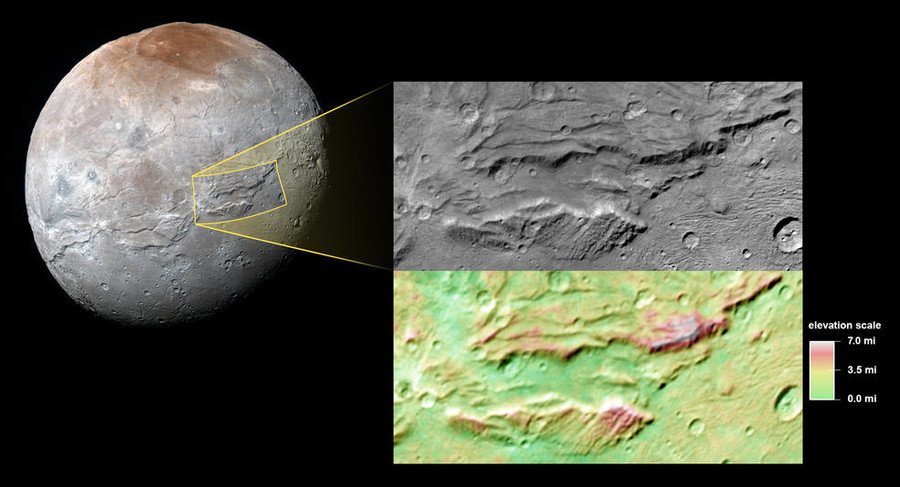Pluto’s Charon may hide ancient sub-surface ocean (PHOTO)

Giant canyons on Charon, one of Pluto’s five known moons, suggest there was once a warm ocean underneath, NASA says. Scientists believe the ocean might be still there, frozen under the moon’s surface.
Recent images from the New Horizon spacecraft suggest that Charon’s peculiar tectonic landscape could have been formed by expansion from the inside.
Having frozen, the ocean might have pushed outward, causing the moon’s surface to stretch and fracture on a massive scale.
READ MORE: Much like Earth’s Moon’: NASA releases high-res pics of Pluto’s satellite Charon (PHOTO)
This has raised the question about how such an ocean would form in the first place. Scientists believe that as the outer layer of Charon is primarily water-ice, in the moon’s youth it could have been heated by internal processes and radioactive elements. Some of the melting water apparently went underneath, into the moon’s deeper layers to form a massive pool of water.

“But as Charon cooled over time, this ocean would have frozen and expanded (as happens when water freezes), lifting the outermost layers of the moon and producing the massive chasms we see today,” a NASA statement reads.
An image published by the space agency shows part of Charon’s 1,800-km belt of chasms, one of the longest in our solar system. It reaches 4.5 miles (7.5km) deep – considerably more than the Grand Canyon on Earth, which is just over a mile (1.6km) in depth.
What flying over Pluto's moon Charon would look like (VIDEO) http://t.co/hMzwMO0zWrpic.twitter.com/RQIhDh3EGv
— RT (@RT_com) 1 октября 2015












